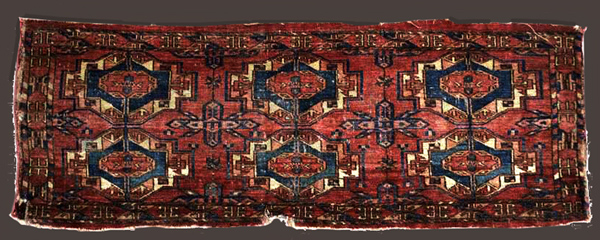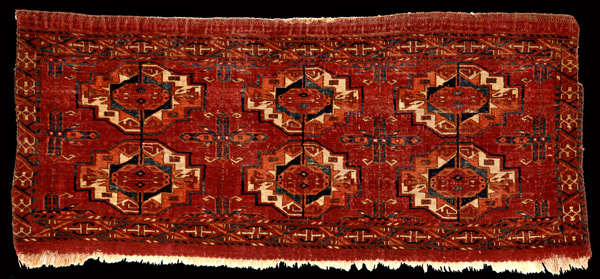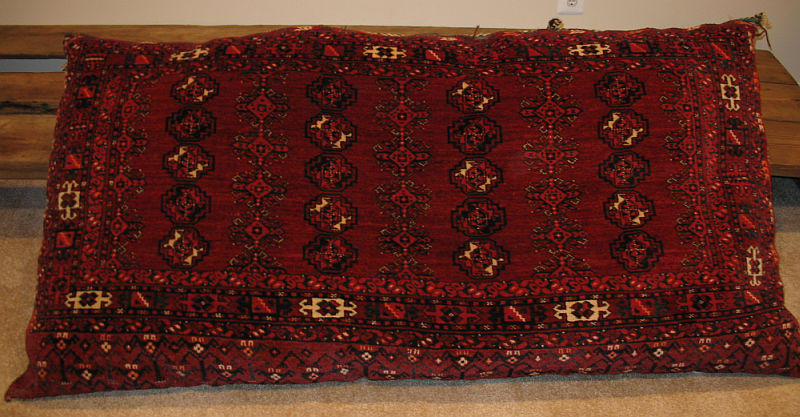Hi Martin
I think the correct expression
lies more at "depth perception is learned, and people who live in
differing envviornments can learn to interpret depth in different ways",
rather than "visuality is cultural coded".
The classic example of
this type of alteration in depth perception is found in a book by cultural
anthropologist Thomas Harris (if I am not mistaken, it has been 30+ years
after all), and consists of African Pygmies, when having been transported
to the plains from their native dense jungle habitat, asserting that
animals seen in the distamce constituted "little animals", and owning to
the fact that they hadn't learned to interpret depth and
perspective.
However, since we all live in the same at hand
enviornment, we should all have the same at hand perceptions of depth and
space. To my thinking it doesn't follow that there should be any
"crossover effect" of one type of learned perception influencing the
other, hence I am dubious of Jim's assertions regarding Turkmen weaving
and depth perception.
Please don't misinterpret Jim, I enjoy and
have enjoyed reading your stuff for some time, but conjecture isn't
science. But then what of this Turkmen business of ours truly is
science?
It makes for some interesting reading, but the margins of
error and limitations of a sampling of this small size renders these C14
pieces little more than curiosities, IMHO.We try to do too much, us
Turkomaniacs. These multidisiplinary tightrope acts of psychology,
anthropology, ethnolingual history are just too much...
I'm glad
that you have once again noted these color changes in your torba, and
depending on direction from which it is viewed. I myself had seen what I
had assumed to be a Tekke small rug, which demonstrated both this peculiar
change in appearence and these same muted/washed out colors. It was finely
woven, and the dealer seemed to pour it out on the floor. Extremely thin
and supple,if my memory serves.
Iv'e been pondering this
Turkomaniac thing for some time now, and it seems to me that this is how
it falls out. I believe fellow Turkotekker Marvin Amstey said it best,
something to the effect of "Why don't we just appreciate Yomud weavings
(and by extension, all of our weavings in general) because they are
beautiful?" and I think this a great place to be

. Shouldn't we
seek pieces, as colloctors which are either beautiful or interesting, and
preferably both?
Sure there are study pieces or ethnographic pieces,
but for myself I want something beautiful to look at when i glance at the
wall or my floor.
I'd like to try a comparison and contrast of both
your torba, and the image that Kurt submitted of an example from his
collection, to see what kind of conclusions I can come to. Just free form,
throw it out there, my thoughts ideas and interpretations. Simple art
appreciation, in a comparison and contrast format. Please, try this at
home, it's what it's all about IMHO

Find below the
two pieces in question, Martin and Kurt's Torba, respectively. Note that I
in no way make any claim to any expertise on this subject, and that these
are just my impressions.


My first impression is that of a
disparity in age. Martin's strikes as of a more recent vintage, to be
honest. The colors are less bright and clear, and there seems to be a
smaller number of colors. One almost gets the feeling that some dye run
could be involved in the odd color qualities demonstrated by the first
piece.
The proportions also seem crampled in the first piece when
compared to the second. The design elements are larger in proportion to
the field of the weaving, in comparison to the second, but the elements
have been pushed closer together. Granted, in Tekke main carpets this
enlargement and cramping of design elements is representative of one
"school of thought" in design evolution, and an early one at that, but in
conjunction with the quality of colors demonstrated, I am not left with an
impression of age.
There also exist disparities in the depth and
amount of detail found in the respective weaving. The second piece
demonstrates a real delight in detail, where as the first is notable for
it's lack. I for one am not convinced of the idea that crude= old. It is
my impression that much of the time the opposite is true, crude= new, and
detail=old.
In short, owning to the unusual proportions, the crude
drawing, and, to be honest, the less than beautiful colors of the first
torba, I would place the first much later in time, and I suspect could in
fact date from the late 19th to early 20th century. A very late piece, and
seeming uncharisteristic of the time period in general, but it has some
rather odd qualities which to me just don't say older. And the C14 test
results do indicate the possibility this conclusion.
But
ultimately, per Marvin Amstey as indicated above, it's all about beauty
anyway. Even if the first piece would turn out to be older, which it may
well be, I still believe Kurt's to be much more beautiful and desirable.
Of course martin's piece is interesting and makes a great ethnographic
artifact, but Kurt's is absolutely delightful by
comparison
Remember, I am not an expert and this is just my
interpretation...
As for the purported dimensionality in the torba,
I for one don't see it. Yes, there is a little something going on there
with perspective, but no more than what is going on with this Ali Eli
Chuval of mine. Also note that it is stuffed to form a large
pillow.

I am not convinced that
percieved dimensionality in Turkmen gull weaving is a function of age, or
for that matter intentional, but I won't say that it isn't
there...
Dave